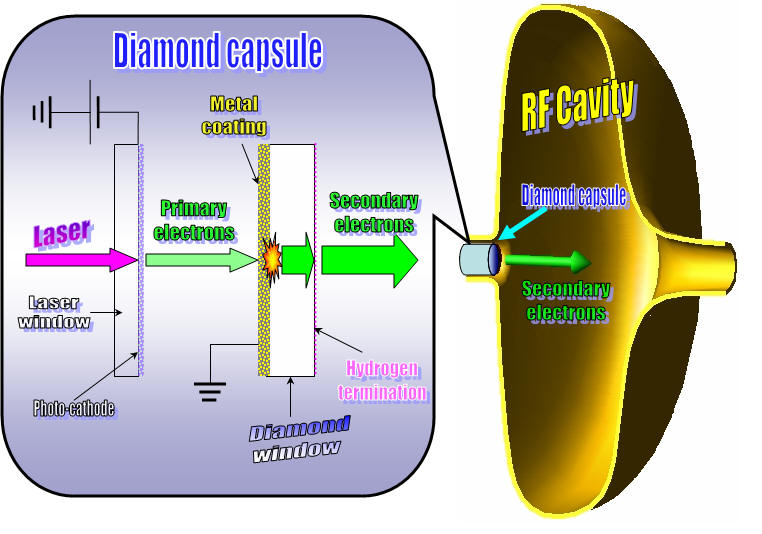RHIC Electron Cooling Group
Diamond Amplified Photocathode principles
Brookhaven National Laboratory (BNL) has an ongoing effort to develop an electron amplifier based on secondary electron emission from diamond. This amplifier will be used in conjunction with a photocathode to produce a high-brightness, high-average-current electron source for accelerators, including the electron cooler for BNL’s Relativistic Heavy Ion Collider (RHIC). This program has already demonstrated significant electron gain (over 300), and has the potential revolutionize photoinjector design and cathode development, by increasing the effective quantum efficiency of a cathode to over 1000%. The diamond will also act as a vacuum barrier, protecting the photocathode from contamination by the accelerator vacuum. The electrons emitted from diamond are expected to be “cold”, as the electrons thermalize to the bottom of the diamond conduction band – leading to a low thermal emittance.

The principle of the photo-multiplying cathode is as follows: The electrons in this gun can be generated by laser light illuminating a photocathode. In the figure, the laser light is introduced through a transparent window to the back of the photocathode, which is assumed to be appropriately thin. The cathode will be situated behind a thin (~30 micron), specially prepared diamond window. A DC voltage is applied between the photocathode and a thin metal layer on the diamond. The electrons are accelerated by this field to a few keV and strike the diamond. The electrons are stopped rapidly, generating a cascade of secondary electrons (depending on the primary energy). The secondary electrons drift through the diamond under the RF electric field of the cavity. The surface of the diamond on the superconducting cavity side is specially prepared by hydrogen bonding to be a Negative Electron Affinity (NEA) surface. Since the electrons are thermalized in passage through the diamond to sub eV temperature, the NEA surface allows them to exit the diamond with a very low thermal emittance.
Last Modified: <% Response.Write (FileLastMod()) %>